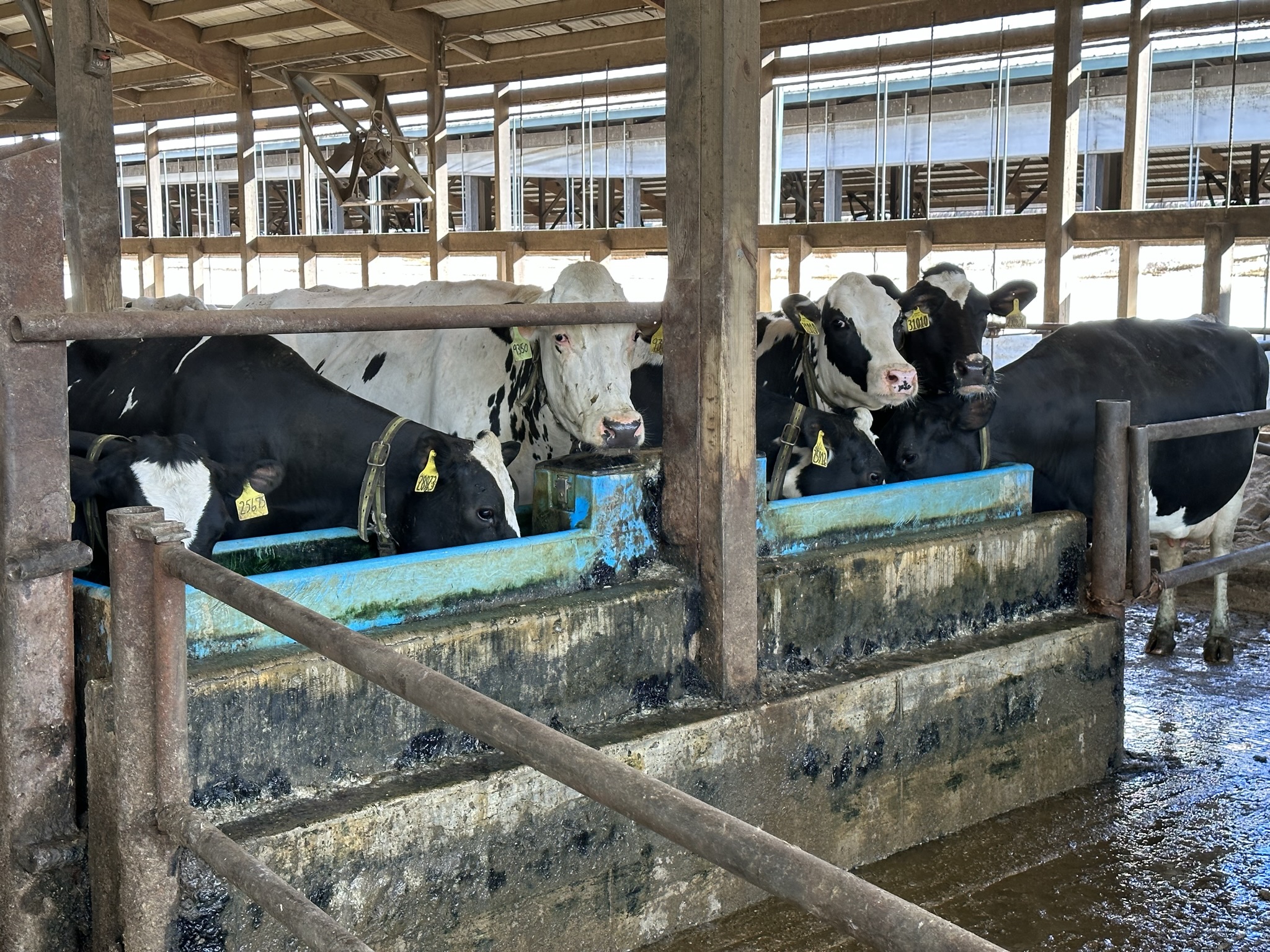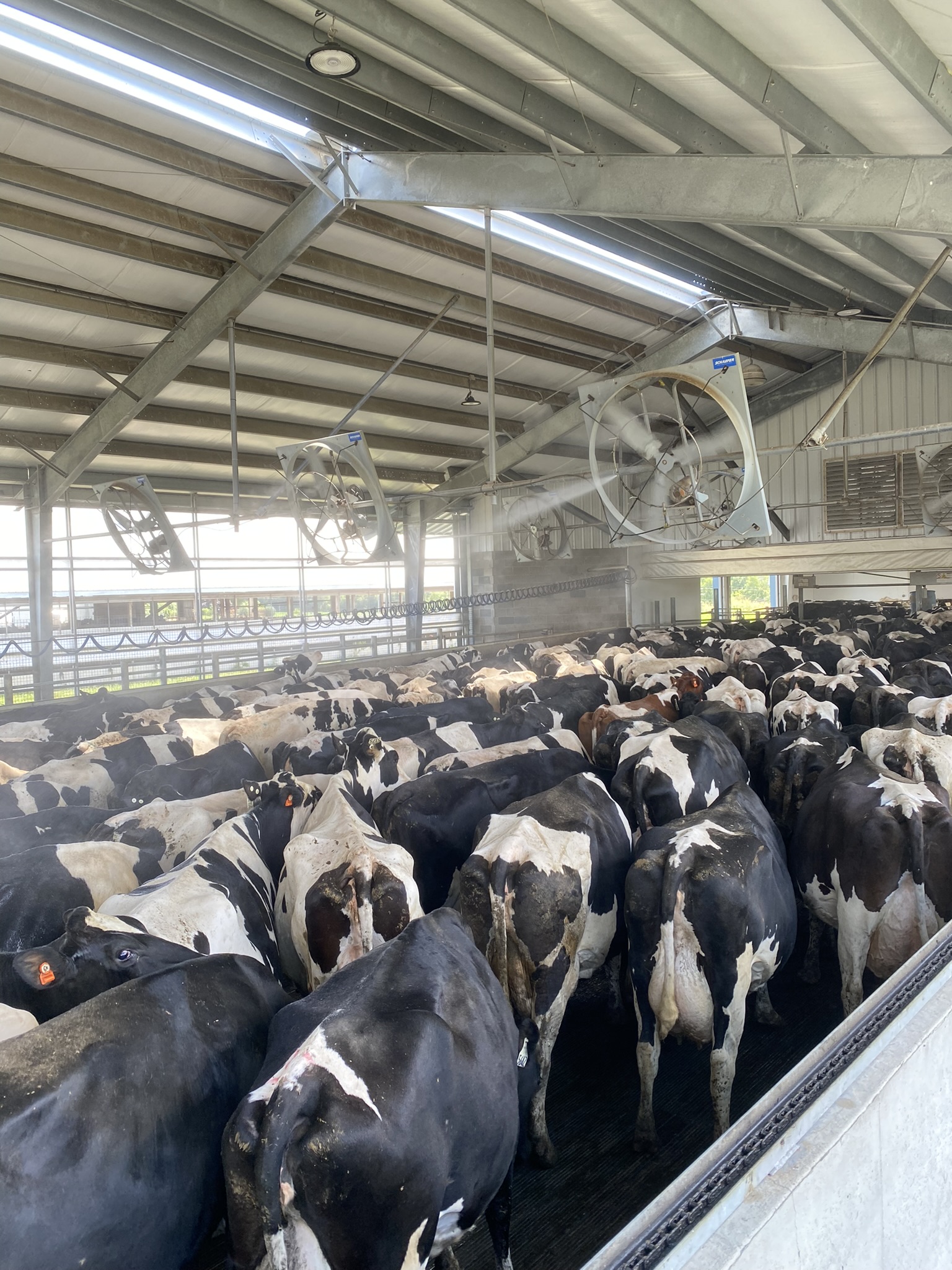Practical heat stress abatement strategies for dairy cows
Several management strategies are available to help cows cope with heat stress minimizing its negative effects.

As spring rolls in, it’s time to consider protecting our dairy cows from the dangers of warmer days. All dairy farmers know their cows are subject to heat stress on warm summer days. Dairy cows are more sensitive to heat stress than many other mammals because of the high metabolic heat production of rumen fermentation. However, the adverse effects of heat stress can start in very mild temperatures (i.e., 65 degrees Fahrenheit) depending on other factors like humidity and solar radiation. In addition, because cows in temperate regions like Northern United States can also not be physiologically adapted to heat stress conditions, sporadic heat stress can take its turn and make it difficult for those cows resulting in significant production losses.
Experts estimate that heat stress can cause a financial loss of over $1.5 billion annually due to its negative effect on milk production reproduction, increased susceptibility to metabolic and infectious diseases, and increased mortality rates. In addition, dairy cows experiencing heat stress show higher rectal temperatures, increased respiration rates, decreased feed intake, decreased milk production (volume and components), poorer reproductive performance, and are more prone to develop other health problems (e.g., ketosis, acidosis, laminitis). Very importantly, as dairy cows produce increasing amounts of milk, they increase feed intake. Consequently, the rumen's heat production increases, making them even more susceptible to the harmful effects of heat stress.
The losses caused by heat stress go beyond the direct impacts. For example, multiple studies have shown that cows exposed to heat stress during late gestation will produce less milk in the following lactation. Also, a study published by the Journal of Dairy Science shows that heat stress in cows during late pregnancy will impact their daughters and granddaughters’ performance with an estimated economic loss of 18.4 million dollars a year for the state of Michigan.
Cows’ heat load is composed of the heat produced by their metabolism and the heat gained from the environment. Therefore, a practical and successful heat stress abatement strategy is based on the modes of heat exchange between cows and their surrounding environment:
- Conduction: physical contact transfers heat from a warm to a cooler object/substance. Example: heat loss from the cow to the air, bed, or floor.
- Convection: heat is transferred from a warm substance to a cooler substance where the substances move past one another—for example, air movement over the cow’s body.
- Radiation: electromagnetic radiation is absorbed on the surface of an object. Example: the radiant energy exchange from sunlight to the cow or from the cow to the night sky.
- Evaporation: heat is exchanged by converting water from a liquid to a gas—examples: sweating, sprinkling water on cows, and breathing.
You can monitor and easily identify signs of heat stress in your herd. Signs to look out for include rapid breathing, open-mouth panting, decreased activity and feed intake, or reduced milk production. When you notice cows breathing with 60 or more movements per minute, this indicates that they are struggling to cope adequately with the heat, and additional cooling would be beneficial. By the time panting occurs, cows breathe at an average of 100 breaths per minute. Cows under heat stress will also increase their water intake, and it is common to notice more cows hanging out around the water through. Cows start to seek cooler areas in the barn, moving away from the side of the barn. It is common to notice cows congregating or bunching up in the darker areas (they associate light with heat due to their grazing instinct) even though this area may be warmer. Cows in heat stress will also eat less and spend more time standing and perching because their core body temperature rises while cows lie down. When they stand up, they can better dissipate heat, so body temperature falls. Based on this behavior, a higher proportion of cows standing is yet another indicator of heat stress.
Here is a video summarizing the impact of heat stress and the signs of heat stress in dairy cows.

While the cows do their part to produce quality milk in the face of warmer temperatures, there are some strategies we can employ to help ensure their comfort and productivity. Here are some heat abatement strategies that dairy producers can use to help minimize heat stress on their cows:
1. Shade: Shade reduces heat stress by decreasing exposure to solar radiation. In Michigan, most cows are housed in free-stall barns. Ideally, free-stall dairy barns should be oriented east to west to provide maximum shade under the roof. Barn roofs should be white-colored galvanized metal or aluminum to provide a maximum reflection of solar radiation. If a shade structure is offered in a pasture environment, the long axis of the structure should be oriented in a north-south direction. When positioned in a north-south direction, the provided shadow moves over a greater area during the day, allowing the ground to dry and avoiding mud formation that is detrimental to health (e.g., increased mastitis). Another possibility is providing portable shade structures that allow you to control and move where your cows congregate for shade, and you can move them to paddocks as needed. Your structures should provide an absolute minimum of 40 square feet of shade per cow to have a potential impact on production.
2. Ventilation: Proper ventilation is critical to maximizing convective heat loss from cows. A good ventilation system should provide one complete air exchange per minute and 1.500 cubic feet per minute per cow in the barn. Air speed should be between 3- 5 mph during periods of heat stress in the resting area, feeding area, and holding pens so cows can lose heat through evaporation and convection. This is usually accomplished using fans. Fans should be mounted at an angle to blow over the stall below the next fan in line (around 20 to 24 F) and 24 to 30 feet apart (the old recommendation of 10 times its diameter has been proven not to provide appropriate airspeed). It is also essential to take advantage of natural ventilation in free-stall barns. Sidewalls should be open, and open ridge vents with a minimum of 6 inches wide for barns up to 30 feet wide, or two inches per ten feet of building width to provide maximum ventilation. Ridge caps are usually not a problem if they are at least one foot above the ridge opening. Overshot ridge openings should be avoided because they significantly limit fee airflow. Attention should also be paid to eave height. For buildings up to 40 feet wide, a 12-foot eave height is adequate. For installations over 40 feet wide, provide at least 14 feet. Heat stress is even higher in the milking parlor holding pen; therefore, this area should also have adequate coverage with fans.
3. Drinking water: Heat stress greatly increases water intake in cows. For example, an increase in air temperature from 86 F to 95 F increases water intake in lactating dairy cows by over 50% (about 21 gallons/day to about 32 gallons/day). Therefore, offering plenty of fresh, clean drinking water is critical. Water trough management in times of heat stress should be more intense and frequent to ensure water is clean and algae-free. Ideally, cows should not have to walk more than 50 feet to get water and not have to walk through or stand in direct sunlight to drink. It is also a good idea to provide fresh, clean water in the exit area of the milking parlor because cows drink more than half of the water intake after milking. As a rule of thumb, provide 1.5 to 2 inches of water tank perimeter per cow, maintaining at least 3 inches of water depth and a water flow of 3-5 gallons/minute.
4. Evaporative cooling: Supplemental cooling using sprinklers/soakers is another strategy, especially effective for high-producing cows. Sprinklers can either lower air temperatures directly through misting and fogging or provide “artificial sweat” by soaking the cow’s skin. The latter is most effective for Michigan dairies since misting and fogging systems also increase relative humidity, working better in drier climates. Soaking cows work more effectively when associated with fans.
5. Feeding routine: Cows are more stressed when the environmental temperature is highest. Feeding at this time-of-day results in the poorest dry matter intake and increases the rate of feed heating and spoilage. Therefore, consider slowly shifting your feeding schedule, especially for high-producing cows, to the cooler portions of the day (i.e., early morning and/or late evening). Also, increase the frequency of pushing up and removing spoiled feed to promote higher dry matter intake, and if possible, feed twice daily.
6. Ration formulation: Heat stress results in depressed dry matter intake. In times of severe heat stress, one strategy is to change diet formulation aiming to increase its energy density without increasing the heat of fermentation. This is usually accomplished by adding rumen-protected fat. Heat-stressed cows are also prone to acidosis, so ensure diets have sufficient effective, digestible fiber and avoid diets that are most likely to cause subclinical acidosis. Cows will reduce intake, and because of that, the use of additives that increase intake, feed efficiency and gut integrity (e.g., yeast products, chromium) are also a good strategy. The potassium level should also be adjusted upward since potassium loss is high due to increased sweating. Heat-stressed cows ruminate less and drool more, so buffers like bicarbonates can also help. When considering any changes to your herd’s diet, consulting a qualified dairy nutritionist is essential.
7. Stocking density: In times of high heat stress, overstocking makes heat stress worse. If possible, reduce stocking densities and provide 30 inches of feed bunk space per cow to encourage dry matter intake. If reduced stocking densities in the whole herd is not possible, focus your effort on the high-risk pens: fresh and high-production cows.

With proper planning and precautions, heat stress in dairy cows can be managed effectively, resulting in better production and overall health. The adoption of these heat stress abatement strategies can minimize the harmful effects of heat stress on dry matter intake, milk production (volume and components), health and reproduction. Heat stress affects not only lactating cows but also dry cows, heifers and calves, so be sure to include every animal in your dairy when considering heat stress abatement strategies.
For additional information or if you are interested in discussing heat abatement strategies or having your barns and herd assessed for heat stress, contact your Michigan State University Extension dairy educator.



 Print
Print Email
Email





